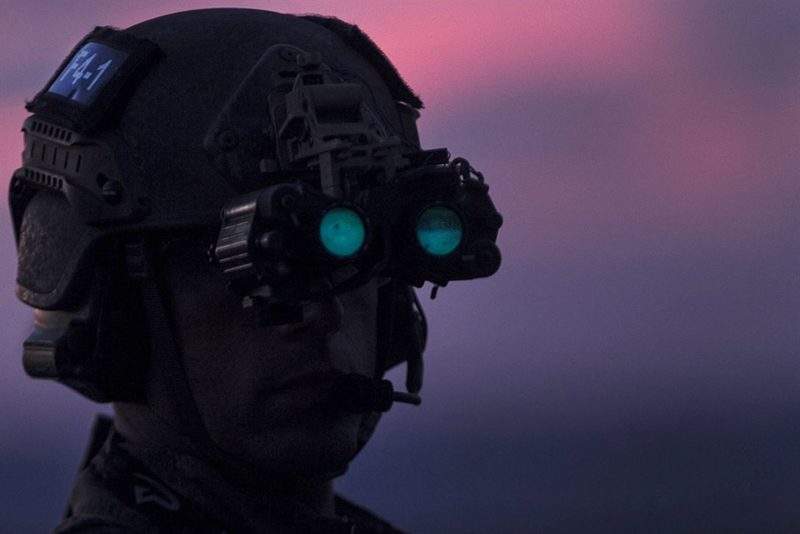
Researchers at the University of Illinois have developed an infrared filter made from graphene that would allow a soldier to view different light wavelengths at the touch of a button.
The filter could help soldiers identify airborne toxins on the battlefield, which are normally identified using infrared sensors that require the goggle filter to be manually changed to recognise different chemical signatures.

Discover B2B Marketing That Performs
Combine business intelligence and editorial excellence to reach engaged professionals across 36 leading media platforms.
It could also improve soldiers’ vision in a range of visibilities, such as smoke, dust or fog.
“Typically when you place graphene on a substrate, it is extremely transparent and absorbs only about 3% of light,” said University of Illinois at Urbana-Champaign assistant professor of Mechanical Science and Engineering SungWoo Name.
“At certain angles, you can see it. We use this versatility to make other structures like flexible and transparent sensors out of graphene.”
Researchers rearranged graphene, which is just one atom thin and is normally used flat, using an origami-style technique.

US Tariffs are shifting - will you react or anticipate?
Don’t let policy changes catch you off guard. Stay proactive with real-time data and expert analysis.
By GlobalDataThey discovered that wrinkled graphene absorbs light differently depending on the structure and dimensions through plasmonic resonances, which produces different colours for different frequencies. Graphene’s structural resilience means that it can be re-stretched into a flattened state and made wrinkle free.
“By changing the shape, you can absorb the light of a different frequency by controlling plasmonic resonance conditions,” said first author and assistant professor at the Mechanical Engineering Department Pilgyu Kang.
“And by mechanically controlling the height and wavelength of the graphene wrinkles, I can excite different surface plasmons and thus absorb different frequency. At the end of the day, you get a tunable filter.”
The user of the infrared goggles turns a knob to mechanically stretch and compress the graphene, letting different light wavelengths to be absorbed. The amount of light absorption can be altered by a factor of approximately 10.
“In a conventional filter, once you make the filter, you are done,” said Nam.
“No matter the size, there is one unique light wavelength. With graphene, depending on how much you stretch and release, you can communicate in different light wavelengths.”
The results were published in the paper ‘Mechanically Reconfigurable Architectured Graphene for Tunable Plasmonic Resonances’, which appeared in the journal Light: Science & Applications. The international collaboration was supported by the Air Force Office of Scientific Research and the National Science Foundation.





